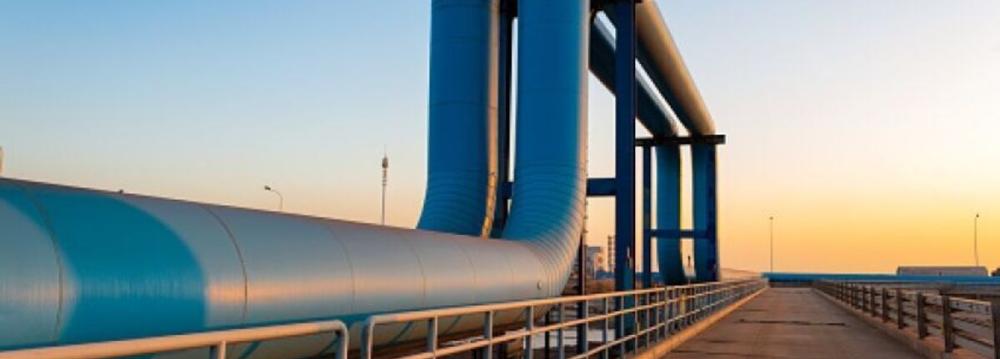The plan to export gas to Oman will be implemented during the current Iranian year (started March 21) by constructing both onshore and offshore pipelines, managing director of Iranian Gas Engineering and Development Company said.
“Based on the contract between Iran and Oman, a pipeline will be laid from Minab in Hormozgan Province to Kuh Mubarak in the same province on the coast of the Sea of Oman,” Reza Noshadi was also quoted as saying by IRNA.
From there, a subsea pipeline will be laid to Oman's Sohar Port in northern Oman, where an existing pipeline runs to Salalah near the Yemeni border.
The sultanate could import as much as 20 billion cubic meters a year of Iranian gas, or more than 50 mcm/d, to meet its demand.
The pipeline will circumvent the maritime boundary of the UAE because the Emiratis will not allow the pipeline to be laid in their territorial waters.
The decision means the pipeline will be laid on parts of the Sea of Oman, which could go deeper than planned. The pipeline may be laid 1,000 meters below the sea's surface instead of the shallower UAE waters at around 300 meters.
The agreement to revive the project was reached during the Iranian Oil Minister Javad Owji’s trip to Oman last year.
In 2016, officials of state-owned National Iranian Gas Exports Company met with those of Oman's Oil Ministry and three international oil companies – Shell, Total and Korea Gas Corp – to explore the potential of exporting gas from Iran to Oman via pipeline.
The two countries signed an agreement, valued at $60 billion, to develop a 15-year gas export plan via a seabed pipeline. The pipeline proposed at the time would have had the capacity to transport 28 mcm/d of Iranian natural gas to Oman.
However, those plans were abandoned when the US withdrew from the Joint Comprehensive Plan of Action, the formal name of the Iran nuclear deal, in May 2018, reinstating sanctions against the Middle East nation.
Based on recent negotiations between Tehran and Muscat, Iran will implement the onshore section of the gas pipeline.
Russia, Iran's political ally and an increasingly close economic partner, could also help with the development plan. Iran is interested in Gazprom’s participation in the Iran-Oman gas pipeline.
Iran produces about 1 billion cubic meters of gas per day, but exports just a fraction — around 60 mcm/d — to Turkey and Iraq. The country holds the world's largest gas reserves after Russia.
Furthermore, Iran and Oman signed a memorandum of understanding last month to expand cooperation in downstream and upstream oil industry.
The MoU, which called for building collaboration to develop oil and gas fields plus expanding petrochemical exports, was signed by Managing Director of the National Iranian Oil Company Mohsen Khojastehmehr and Salim al-Aufi, Oman’s minister of energy and minerals.
Grid Expansion in Sistan-Baluchestan
Referring to other projects of the Iranian Gas Engineering and Development Company in the current Iranian year, Noshadi said the expansion of gas grid in the eastern and southeastern parts of the country is on the agenda of the company.
“One project will undertake the construction of a pipeline from Dashtak in Fars Province to Nehbandan in Sistan-Baluchestan Province, the executive operations of which will begin soon,” Noshadi said.
After supplying gas to the cities of Zabol and Khash in Sistan-Baluchestan in the past few months, the third largest gas project in the vast province will become operational soon with the completion of the 290-km Iranshahr-Chabahar-Konarak gas pipeline.”
The project will supply gas to the southern regions of the province and coasts stretching along the Sea of Oman.
In addition to providing the energy needed by petrochemical units and power plants in the region, the project will help promote the sustainable development of southeast Iran and improve economic, industrial and tourism activities in the underprivileged province.
The construction of the pipeline to transfer natural gas from Iranshahr to Chabahar is in its final stages and will be completed in the near future. It has so far cost $427 million.
Iranshahr was the first county in the province, which was partly connected to the gas grid. From there, a 262-km pipeline supplies gas to Zahedan, the provincial capital bordering Afghanistan and Pakistan.
The pipeline is an extension of Iran Gas Trunkline 7 (IGAT-7) that stretches over 900 km between Asalouyeh, Bushehr Province, and Iranshahr, Sistan-Baluchestan.
So far, over 100 factories and industrial units in the province have been linked to the gas network and 200 more will be connected soon.


